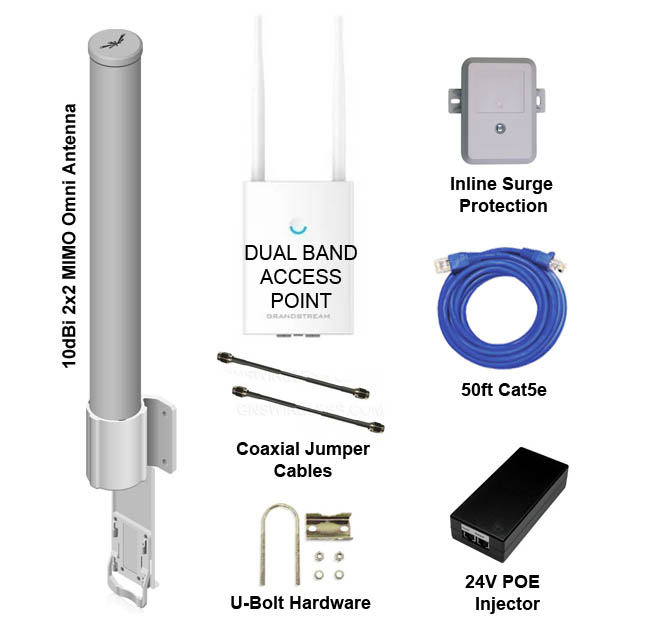In recent years, many businesses have moved to the convenience of WiFi. There is little mystery as to what a WiFi system is. Think of it as a radio that is used by computers to access the internet. If WiFi is the radio, then a WiFi antenna is the WiFi card’s speaker. To extend the range of the speakers, upgrade to a bigger antenna. Easy? Not so fast. There are numerous options including Directional Antennas, Omni-Directional, Point-to-Point, and Point to Multi-Point antennas. Which is best for a business depends on individual needs. Business owners who wish to extend the range of their company’s WiFi, however, should not just buy the biggest long-distance WiFi antenna they can afford. As with any technological upgrade, using a long-range WiFi antenna has its pros and cons to consider. Continue reading to find out the pros and cons of using a long-range Wi-Fi wireless antenna, like the GNS-1685-AX.
Interference and Long Range WiFi Antennas
Long-range directional antennas divert radio frequency signal energy in one direction to increase the transmission distance. However, this reduces the beamwidth of the signal. Placement is key to achieving the maximum coverage and range. A major consideration and drawback when installing long-range WiFi antennas is signal interference. This packet loss issue can be caused by cordless phones, radar signals from traffic lights, to airports, even microwave ovens. However, the most significant concern, when extending range, is the increased possibility of data security breaches on shared channels.
To make the best choice when extending your WLAN network’s reach, consult with the professionals at GNS Wireless. Our staff will consider individual needs and capably provide the best long-distance WiFi antenna solution. Speak with us at (877) 209-5152, or submit your request via our contact form.

